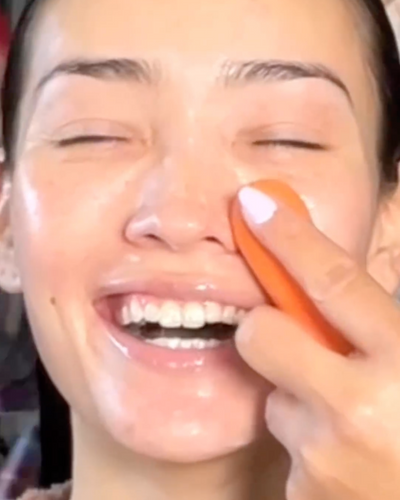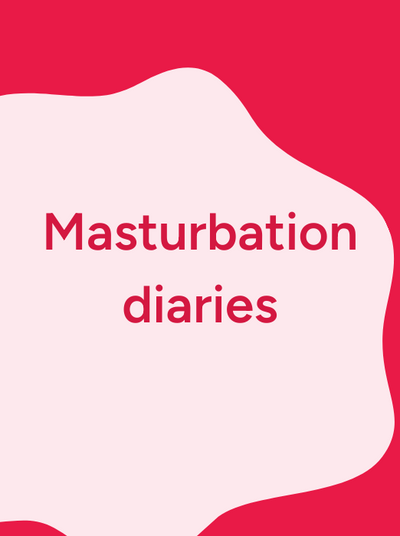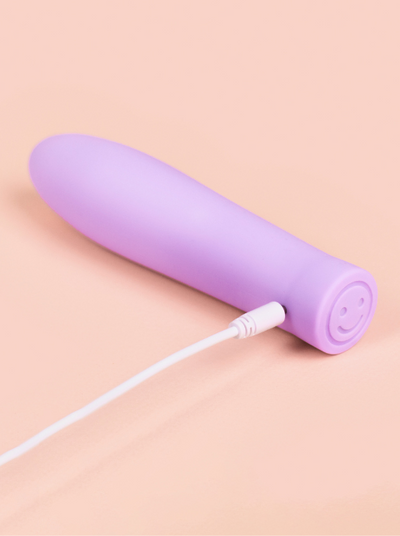Our ability to explore and enjoy our sexuality stems from a better knowledge of our body, and a curiosity to try new things.
What are multiple orgasms?
In short, to have a multiple orgasm is to experience climax several times during the same session of sexual activity. For vulva owners, successive orgasms can come (uh-hum) about during both solo and partnered sex – it’s not just a shared experience!
Widely represented in porn, the female multi-orgasm is depicted as an extraordinary occurrence; yet again, another part of female pleasure placed on a pedestal for the very people that can experience. It’s not just porn. Erotic scenes in all kinds of media are often over-exaggerated and misrepresent multiple orgasms, leaving us wondering ‘what, how and when’ please we’d like one of those. Maybe.
Just like allll things sex, the potential for multiple orgasms is so personal to each of us. For some of us and on occasions, our energy level drops after orgasming and we’re ready to snooze, others feel hypersensitive after climax and couldn’t stand any more stimulation. Some of us, on the other hand, are quickly, or instantly, ready to experience the pleasure peak again. Physiologically talking, anywho…
How do multiple orgasms work?
The female orgasm is the physiological response to sexual arousal, in its maximum phase. Our body responds with rhythmic and involuntary contractions of the vaginal muscles, accompanied, depending on the vulva owner, by a redness on the thorax or the neck, sweat, an acceleration of the cardiac and/or the respiratory rate, and sometimes even by tears. And not only: every one of us has their own body response to climaxing.
To attain this blissful pleasure peak, a vulva owner goes through phases of excitement that crescendos until reaching a threshold where orgasm becomes possible. For some, if excitement is maintained and stimulation finely adjusted, this plateau phase can last for some time. It is during this plateau phase that some say they experience several orgasms. For some, the first is the best, and the following are "small orgasms". For others, intensity grows with each orgasm. Again, it all depends: our experience of orgasm, our body response, and the way we feel next is very personal – and can differ from day-to-day, and throughout life.
Should I strive for multiple orgasms?
Must you experience multiple orgasms? No! We encourage you to shake off the sex-pectations society puts upon us vulva owners and go about your sex life seeking out the pleasure you want and is possible for you.
The depiction of multiple orgasms on-screen may be make-belief, but they are real. The research behind exactly how many of us can experience them is too little, but science does observe that those who experience multiple orgasms generally know their body well. Sexual experience and age might also play a role: it seems to happen more often in our forties than our twenties. But again, it varies with each vulva owner ...
And it is not an end in itself: we can very well be satisfied with ONE orgasm, and on the contrary feel frustrated after a multi-orgasm. Nor does having an orgasm (any number) mark the end of sex or indicate just how satisfied we are post-sex. Solo or partnered, we can experience great pleasure without climax – and vice versa.
What are the benefits of multiple orgasms?
Multiple orgasms are just another way to explore more pleasure, alone or with somebody else. They have the same benefits as any other orgasms (better sleep, less stress, etc.), just… we get to experience the good sensational release more than once. Though, multi-orgasmic feels can be intense too, and leave our vulva and vagina super sensitive.
Make sure if you are striving for multiple orgasms, that you look after your vulva – try not to irritate the area with friction and rubbing.
How do I know if I have experienced multiple orgasms?
So, the thing about multiple orgasms is that they are, well, multiple. Imagine an orgasm is reaching the height of pleasure; what goes up, must come down. So, to experience orgasms sequentially means we go up, then down to a less stimulated state before reaching the pleasure peak again. Repeatedly, perhaps.
This is different to prolonging an orgasm, ie waiting at the height of pleasure before going back down. Edging and stacking orgasms are methods to make one orgasm last longer.
How comes women can have multiple orgasms?
Women, men, and non-binary people can experience multiple orgasms. Both vulva and penis anatomy can reach one climax after another. However, the difference is in the duration of the refractory period, which is statistically shorter for vulva owners. Penis havers, in general, need more time to recover from an orgasm. This does not mean that women are good to go again right away: remember physiological reactions don’t always match up with our emotional or mental desires.
What is a refractory period?
After orgasm comes the resolution phase. This is when the body returns to its normal state as when before you were aroused. Resolution happens regardless of whether you have an orgasm or if you stop before then. The resolution stage also often comes with a refractory period, or the length of time during which we cannot be aroused by sexual stimulation.
How many orgasms can a woman have?
It differs for every vulva owner. The number of times one of us has orgasms, is not an indication of how others will experience back-to-back climax. A quick internet search and it’s possible to see lots of reports, and stories of vulva owners sharing their orgasmic experiences – that can seemingly hit upwards of 100 climaxes. Wowza.
How to have multiple orgasms?
There is no universal methodology on how to get multiple orgasms. And the problem of suggesting that there is a miracle recipe is that, if it does not work, we risk getting into a vicious circle where we see it as a failure. When, quite frankly, our pleasure should never be pitted together with failure. The potential for multiple orgasms is most definitely something to explore if we want, but we shouldn’t see it as a something we have to check off.
Plus, where’s the fun in counting? If you’re worrying about how many orgasms you will or are having, it’s harder to find pleasure and focus on your body.
‘A recent documentary on the “super-orgasm” – actually multiple orgasms – found that women who had multiple orgasms had slower alpha waves than the average woman. Their brains were quieter, making more room for pleasure.’
Intentions of multiple orgasms can be distracting, but here are a few solo-sex suggestions that might help you sustain orgasmic potential past the first climax.
- The stimulation we liked before our first orgasm; may not be the stimulation we want after. After climax, our body may be in a whole new state of sensitivity versus at the very beginning of the sex session.
- Tone it down. Remember, on peaking speed and pressure may have increased – but you’re no longer there. You’re now on the build up again, and the type of stimulation you want may reflect that.
- The clitoris can become even more sensitive post-orgasm. Eliminate direct touch, and instead try layering to ease the intensity. Flexing is a technique that doesn’t require any touch, and instead rhythm through squeezing muscles (the same we use to hold in a pee).
- Alternatively, maintain touch but keep it broad. Cupping of the vulva, also called the grounding technique, can help soothe the sensations for the next build up.
Techniques to try for multiple orgasms.
- Layering: add some clothing. Having your underwear in between your fingers or clitoral vibrator and clitoris will create a cushioned friction without such an intense sensation experienced when the clitoris is feeling overly sensitive. Additionally you can use your labia majora (outer lips) by pulling them over the clitoris and masturbating on top.
- Slow orbiting: circle around your clitoris. With your fingers or clitoral vibrator. You can vary pressure, from gliding along the surface to actively pressing. Explore by creating patterns such as a figure eight. Something else to consider while orbiting, is direction. It is likely you will discover you favour starting from one side; clockwise or anti-clockwise, experiment!
- Going beyond the clitoris. If you've taken our Vulva Talks sex ed program, you know that the clitoris is far larger than meets the eye. Stimulating the labia minora and vaginal entrance is likely to create a sexual response as they connect to the internal parts of the clitoris as well as the urethral and perineal sponges’ respectively. These vascular areas contain erectile tissue and ample nerve endings which engorge during arousal, hence the pleasure possibilities. When having sex with a partner, using a clitoral vibrator externally while they penetrate you vaginally can heighten your pleasure.
- Grounding: holding your vulva. Many people swear on this technique as a way to literally ground their sexual energy after sex. Using the palm of your or your partners hand over your vulva, simply hold still as the intense post orgasmic sensations dissipate. After a few moments try returning to your sexual activity, partnered or solo and notice any difference you might have sensitivity wise.
For partnered sex, share these considerations – and communicate with them if you think you’ve potential to orgasm again. Tell them that you’re ready again, or that you’d like to and can come again. It’s yet another shred experience that can build intimacy between you.
Note, if you have sex with penis havers – remind them it’s not like what we see in the movies. Penetrative thrusting alone is actually very rarely involved in vulva owners orgasms, let alone multiple ones.











